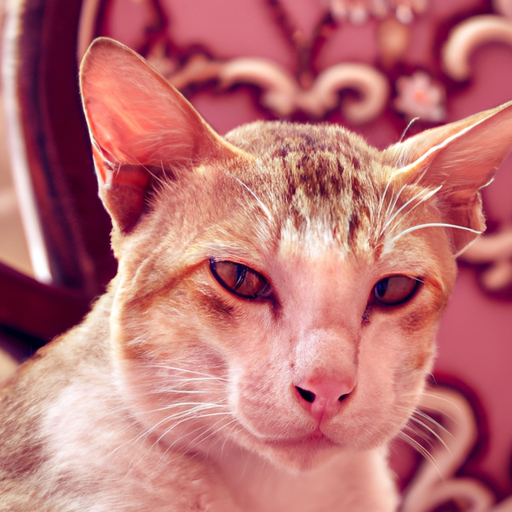What Colors Can Cats See?
Have you ever watched your beloved feline companion swat eagerly at a ball of yarn, and wondered how they view the colorful spectacle before them? This article is just for you. In “What Colors Can Cats See,” you’ll get an in-depth exploration of the feline visual spectrum– a fascinating peek into your pet’s vibrant yet mysterious perspective. You’ll learn about what colors dazzle your cat’s eyes and which are just plain dull to them. Prepare yourself for a delightful journey that will deepen your understanding of your cat’s world!
Understanding Cat Vision
As a cat owner, you may be very curious about how your adorable feline companion sees the world around them. It’s not as simple as looking into their eyes. While we can’t exactly experience the world from a cat’s eyes, modern research gives us many clues about how cats perceive colors and structures.
Basics of Feline Eyesight
The basics of feline eyesight are not so vastly different from human eyesight as you may think. Like humans, cats make use of a complex visual system to interpret light into images. Their eyes contain a lens, a cornea, and a retina filled with light-sensitive cells that decode light waves into signals your cat’s brain can understand. However, the distribution and density of these cells, and other physical attributes, result in some major differences between feline and human vision.
Differences Between Human and Cat Vision
The primary difference between human and cat vision revolves around sharpness of vision, perception of color, and sensitivity to light. Humans have a more broad and vibrant color perception, while cats see a more muted and restricted spectrum color spectrum. Furthermore, cats have a reduced acuity or sharpness in vision when compared to humans, but they compensate for this by having superior light and motion sensitivity.
Physical Structures Impacting Color Perception in Cats
Color perception in cats is a result of different physical structures and cells in their eyes. Some of these structures are similar to those that humans have while others are unique to cats and other animals.
Rod Cells in Cats
Rod cells are the visual cells responsible for detecting light and darkness, providing cats with a good sense of motion and superb night vision. These cells are more prevalent in your cat’s eyes than in yours, which is the major reason why cats see better in the dark compared to humans.
Cone Cells in Cats
Just like humans, cats also have cone cells. These cells allow for color perception. However, cats have fewer cone cells, which explains why cats do not view colors as vibrantly as humans do.
Tapetum Lucidum: Reflective Layer in Cat’s Eye
One particular physical structure that plays a significant role in cats’ vision is the Tapetum Lucidum. This reflective layer behind the retina acts like a mirror, reflecting light back through the retina to enhance visual sensitivity in low light conditions. This structure is what gives cats their eerie night-time eye glow.

The Color Spectrum: Can Cats See All Colors?
The way cats perceive colors is directly related to the color spectrum, the distribution of light power versus wavelength.
The Color Spectrum and Human Vision
Humans perceive a wide array of colors including reds, blues, greens, and everything in between. This is because humans have three types of cone cells each specialized to perceive a certain range of wavelengths of light.
The Color Spectrum Visible to Cats
Unlike Humans, cats can only perceive a much narrower range of colors. The reason for this is because they only have two types of cone cells.
Colors Cats Can See
In terms of specific colors, cats experience the world differently than we do.
Detecting Blues and Yellows
Research suggests that cats can see blue and yellow hues effectively. This is because the two types of cones that cats possess are most sensitive to blue and yellow wavelengths.
Lack of Perception for Reds and Greens
While cats are good at seeing blues and yellows, they cannot distinguish reds and greens. They probably see these hues as grayscale or, possibly, a bluish or yellowish tint.

Why Can’t Cats See Certain Colors?
If you’re wondering why cats can’t see certain colors, the explanation rests in their evolutionary history and the structure of their eyes.
Lack of Certain Color Detecting Cones in Cats
Unlike humans who have three types of cones, cats only have two. This two-cone structure in cats’ eyes reduces their ability to perceive the full spectrum of colors that humans can see.
Adaptations for Hunting over Color Vision
One of the main reasons cats evolved with a reduced color spectrum and increased light sensitivity is because of their hunting lifestyle. Being able to see in the dark and notice the tiniest movements are of greater survival value than seeing a broad spectrum of colors.
Can Cats See in the Dark Better than Humans?
Yes, thanks to those plentiful rod cells and the reflective Tapetum Lucidum, cats can see remarkably better in the dark than humans can.
Night Vision in Cats
The combination of rod cells and the Tapetum lucidum gives cats their superior night vision. Rod cells are extremely sensitive to light, and with the Tapetum lucidum reflecting light back through the retina, cats can see well even in nearly total darkness.
How Does Night Vision Impact Color Detection
Night vision does sacrifice color detection. To perceive color, the light must be bright enough to activate the cone cells. In situations with dim light or darkness, rod cells take over, resulting in a less colorful, but brighter and more detailed perception of the surroundings.
How Do Cats React to Different Colors?
It’s important to remember that cats, like people, are individuals and some may show specific preferences or behaviors in relation to colors.
Preference for Certain Colors
Because cats can best perceive blue and yellow, they might show a preference for items of these colors. This is not a hard-and-fast rule, however.
Does Color Influence Cat’s Behavior
Some studies suggest that color can influence a cat’s behavior. Certain hues might attract or repel them, but this can vary widely between individual cats.
Scientific Studies on Cat’s Color Vision
The subject of cat’s color vision has been a topic of interest for numerous studies and researches over the years.
Thoroughbred Study on Cat’s Color Vision
One of the pivotal studies done in 2001 showed that cats indeed perceive colors but in a limited spectrum. In this study, cats could distinguish between red, blue, and green lights, but not as clearly and accurately as humans.
Recent Researches
More recent researches have confirmed the limited color perception in cats. In these studies, cats demonstrate a clear ability to differentiate between blues, grays, and yellows but show limited ability in differentiating between reds and greens.
Impact of Color Vision on Cats Daily Life
The ability, or rather the inability, to perceive certain colors does have an impact on a cat’s life.
Does Limited Color Vision Affect Cats?
While limited color vision may seem like a disadvantage, cats are not particularly affected by it. Their superior night vision and ability to detect movement more than makes up for a relatively monochromatic world.
How Are Cats Compensating for Their Color Vision
Cats compensate for their limited color vision by relying more heavily on their other senses. Superior night vision, acute hearing, and excellent sense of smell all make up for less colorful perception.
Common Myths about Cat’s Color Vision
While we know more now about how cats see the world than ever before, some misconceptions persist.
Do Cats Only See Black and White?
No, this is a myth. While the color spectrum visible to cats is less vibrant and more narrow than that visible to humans, it does not mean they only see in black and white. They can perceive blues and yellows.
Can Cats See Ultraviolet Lights?
Contrary to some rumors, cats cannot see ultraviolet light. Their vision in this respect mirrors human abilities closely – ultraviolet light is outside both species’ visual range.
So, what’s the takeaway here? You may not be able to show your feline friend your favorite red sweater in the way you see it, but they still have a fascinating world of sight to explore. Remember, their uniquely adapted vision makes them the remarkable hunters that they are, and this has served them well in the wild for generations.






